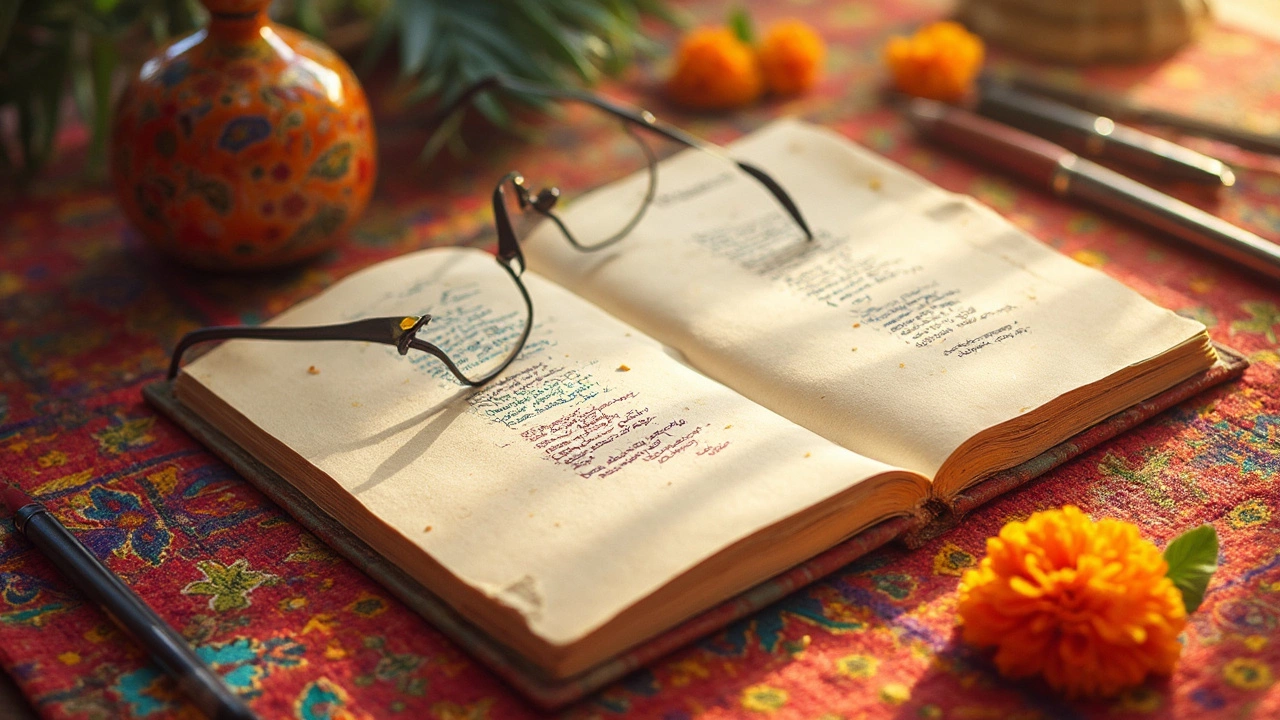Indian Poetry Forms
When you dive into Indian poetry forms, the traditional structures that shape verses across languages such as Hindi, Punjabi, and Sanskrit. Also known as Bharatiya kavita styles, it offers a window into centuries of cultural expression. Ghazal, a lyrical couplet form rooted in Persian romance and mysticism is one of the most beloved, while Doha, a two‑line meter used by poets like Kabir and Tulsidas provides a punchy, moral punch. Bhakti poetry, devotional verses that celebrate love for the divine fuels festivals, and Shayari, the modern spoken‑word tradition popular on social media keeps the spirit alive for younger audiences. Together these styles illustrate how Indian poetry forms encompass diverse emotions, languages, and rituals.
Why the Variety Matters
Each form serves a specific purpose. Ghazal requires a strict rhyme‑scheme called ‘radeef’ and a repetitive refrain, which trains writers to weave melody into meaning. Doha relies on a simple 13‑syllable line, making it ideal for teaching moral lessons to children. Bhakti poetry often pairs with music, turning verses into communal chants that strengthen cultural identity. Shayari breaks the rules, borrowing from Western rap and hip‑hop while retaining Indian idioms, so it’s perfect for expressing personal stories online. This range shows that Indian poetry forms require different skills – from mastering meter to improvising on the spot – and enable writers to connect with audiences across generations.
Historically, these forms evolved alongside major movements. The Bhakti movement of the 15th‑17th centuries gave rise to devotional verses that still echo in today’s festivals. Persian influence introduced the ghazal during the Mughal era, and it survived through court patronage and later Bollywood lyrics. The oral tradition of shayari blossomed in Urdu mushairas (poetry gatherings) and now thrives on WhatsApp status updates. Understanding this timeline helps you see why a single poem can carry layers of history, language, and social context – a hallmark of Indian poetry forms.
If you’re new to writing, start with a simple doha. Pick a moral theme, follow the 13‑syllable rule, and experiment with rhyme. For seasoned poets, try a ghazal: craft a haunting refrain, keep the rhyme consistent, and let each couplet stand alone yet contribute to a larger mood. Want to blend tradition with trend? Write shayari that mixes Hindi slang with classic metaphors, then share it as a WhatsApp status to see real‑time feedback. These practical steps show how the various Indian poetry forms interact with everyday life, allowing you to practice both discipline and creativity.
Beyond individual practice, the forms also shape public discourse. Politicians quote bhakti verses to invoke cultural unity, filmmakers embed ghazal lyrics to heighten romance, and social media influencers use shayari to spark viral conversations. By recognizing these connections, you can better appreciate how Indian poetry forms influence modern storytelling, advertising, and even education. This awareness turns reading into a richer experience and writing into a tool for impact.
Below you’ll find a curated collection of posts that dive deeper into each of these styles, explore famous examples, and give you actionable tips to write your own verses. Whether you’re after inspiration, historical context, or a fresh writing prompt, the articles ahead cover the full spectrum of Indian poetry forms.

Short Poem Types: What is a Short Poem Called?
Ever wondered what a short poem is called? This article breaks down the world of short poetry, looking at the terms, types, and unique styles in India and beyond. You'll get a peek at popular forms, learn fun facts, and pick up tips for writing your own tiny poems. Whether you're a newbie or just curious, this guide makes short poems easy to understand. Discover why the smallest lines can pack the biggest punch.
Read more